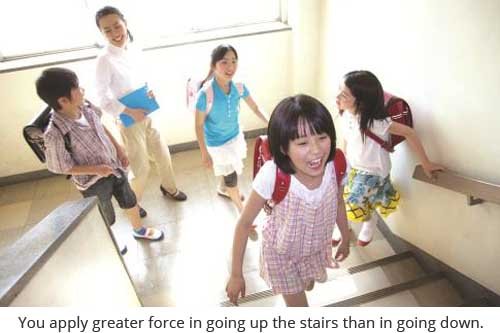Gravity
Observe your surroundings. Find out the effects of gravity on the objects around you. Hanging objects are directed downward because of gravity. Objects that slip from your hands fall downward. If you throw a ball or a stone upward, it goes down to the ground too.
In most cases, the force of gravity seems to stop objects from rising. Moving an object to a higher place is more difficult than bringing it down. For example, going down the stairs is easier than going up. In the same manner, climbing up a hilly area is more difficult than going down. Your body tends to bend forward and make small steps with difficulty, but you move faster when going down. All these things happen because of gravity, the pull toward the center of the earth. Gravity does not only cause objects to move downward but also makes the downward movement faster.
Big rocks from the top of the mountain roll down to the hillside swiftly. Even hanging high cliffs fall to the ground. In the same way, from the top of a slide, you move downward fast. These are all because of the pull of gravity. A pulling force is exerted on the objects; thus, they move downward, toward the earth.

